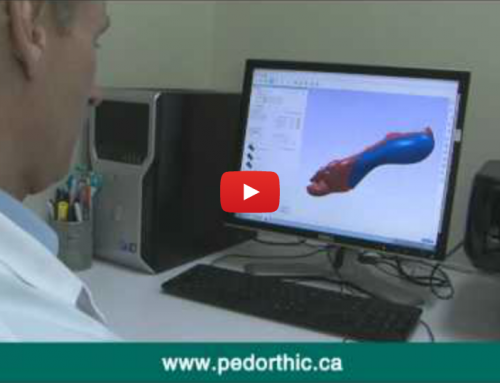If you’re experiencing foot or lower limb pain your doctor may refer you to a Canadian Certified Pedorthist for custom orthotics to help support and align your feet. To create an exact fit the pedorthist will begin by making a cast of your feet. There are several ways to do this including doing a 3D computer scan of your foot, creating plaster slipper casts and using foam block impressions to make an imprint of your foot.
Once the cast has been made the pedorthist then makes a physical model of your foot. Many pedorthists make the model using plaster, but others use a digital method and then carve the model out of wood or plastic. After the model has been made the pedorthist carefully smooths it or adds additional material to its shape so the orthotic will hold your foot in the best possible position. Next the pedorthist heats the raw material of the orthotic shell in a convection oven so that it’s flexible. Depending on your foot type and condition, orthotics can be made out of dozens of different materials. However, plastic and foam are two of the most common materials.
Once the shell material is flexible, the pedorthist carefully layers it over the foot model and then vacuum presses it to create an exact duplicate of your corrected foot shape. Trimming excess material and grinding come next. During the grinding stage the width, depth and angle of the orthotic are set. Each orthotic is made within one millimetre precision, so the grinding requires a lot of skill and is very labour intensive. Grinding is followed by a careful quality check. Then if a top cover is required it’s placed on the orthotic and trimmed for added comfort.
Although foot orthotics look like simple devices, one pair of custom orthotics can take a pedorthist two to five hours to make but the results are well worth it. Foot orthotics support, align and accommodate foot abnormalities and improve how your foot functions. A custom made foot orthotic can be the difference between sitting on the sidelines and being mobile and pain free.




